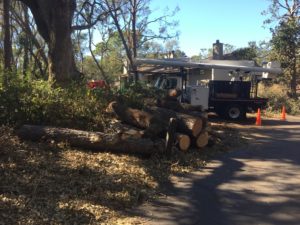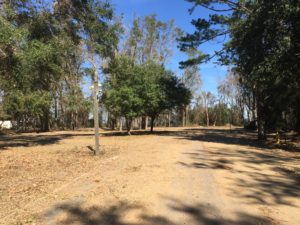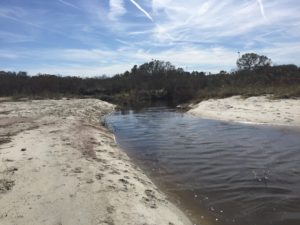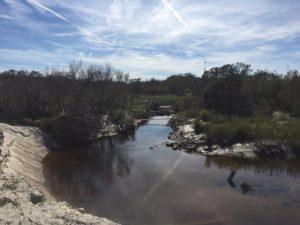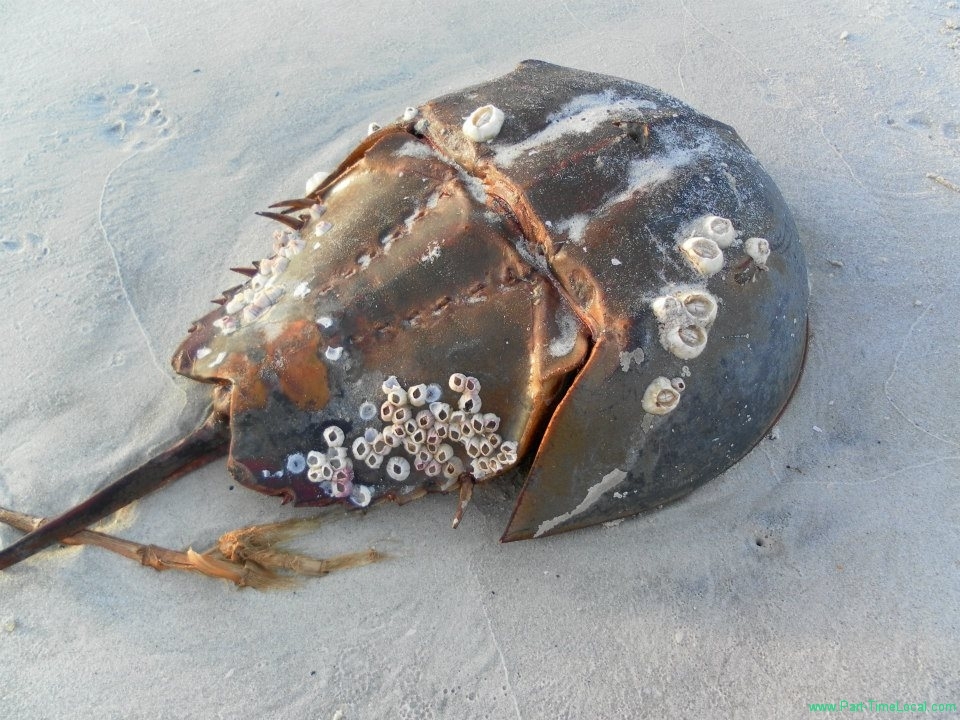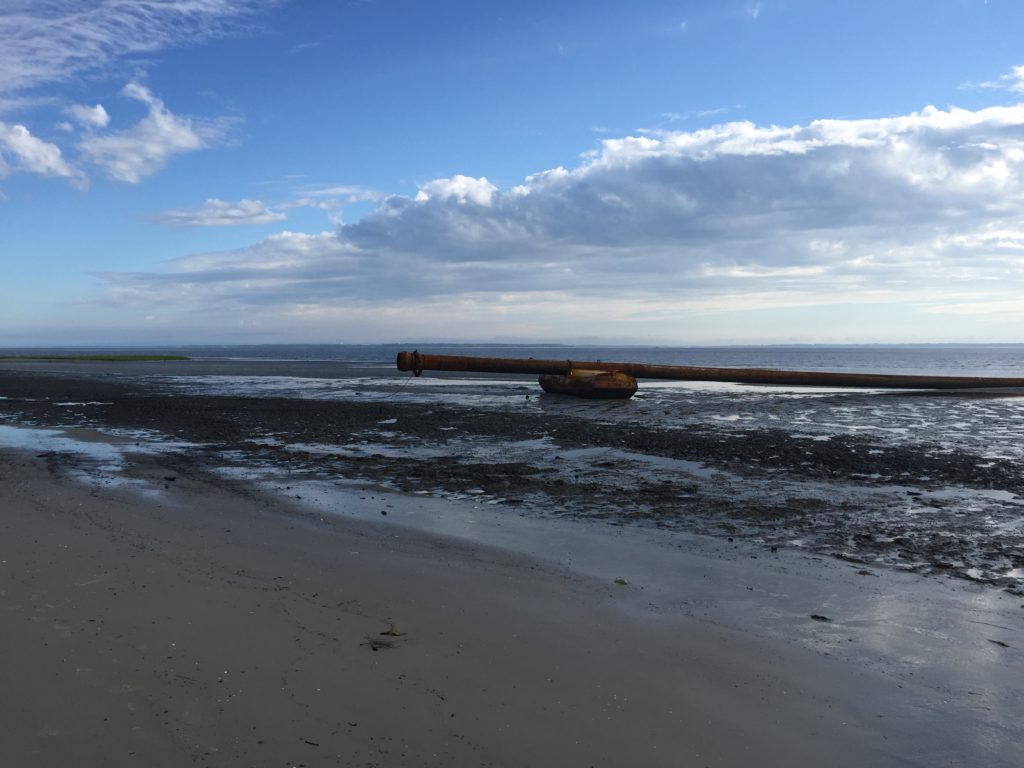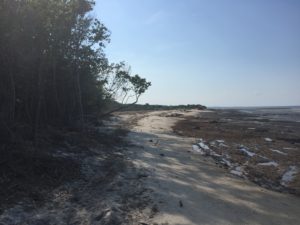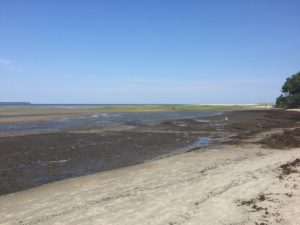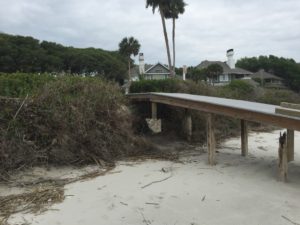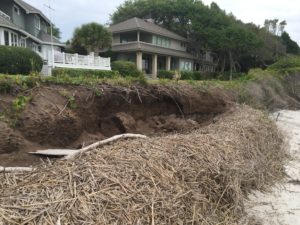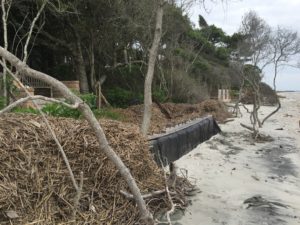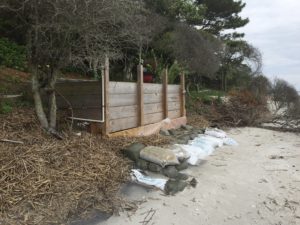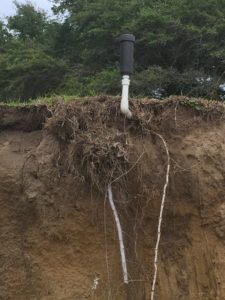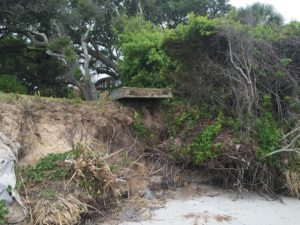
I found this live tagged female May 15, 2016 on Mitchelville Beach, just west of the sign marking the public shellfish grounds.
Horseshoe crab eggs provide an important food source for shorebirds, the crabs themselves are important to medical research and pharmaceutical companies, and they are harvested by commercial fishermen to be used as bait. The status of horseshoe crab populations along the Atlantic coast is poorly understood, but the crabs continue to be harvested. Although it is believed that horseshoe crabs are abundant, a decline in the population could severely impact shorebird populations that depend on the eggs for survival and severely impact medical uses of the crabs.

Each animal is tagged with a unique number and the tag includes both the phone number and website for reporting.
In 1999, the U.S. Fish and Wildlife Service initiated a coast-wide tagging program. Currently horseshoe crabs are tagged and released by researchers along the Atlantic and Gulf coasts as part of several on-going studies. This program provides data on distribution, movement, longevity, and mortality of horseshoe crabs. Data are used to inform management decisions about maintaining sustainable horseshoe crab populations. Proper management of horseshoe crab populations will benefit shorebirds, the biomedical industry and the commercial fishing industry.
The U.S, Fish and Wildlife Service views public involvement as an important factor in this program. If you see a Horseshoe Crab with a tag such as this, please call the phone number on the tag and report the tag number, or easier yet, just go online and fill out the Horseshoe Crab Resighting Form. Taking a picture as I did or writing down the numbers will aid you. A certificate of participation containing release information is sent to those who report horseshoe crab tags. You will also receive information about horseshoe crabs and shorebirds, and the first time you make a report you get an awesome pewter horseshoe crab pin.
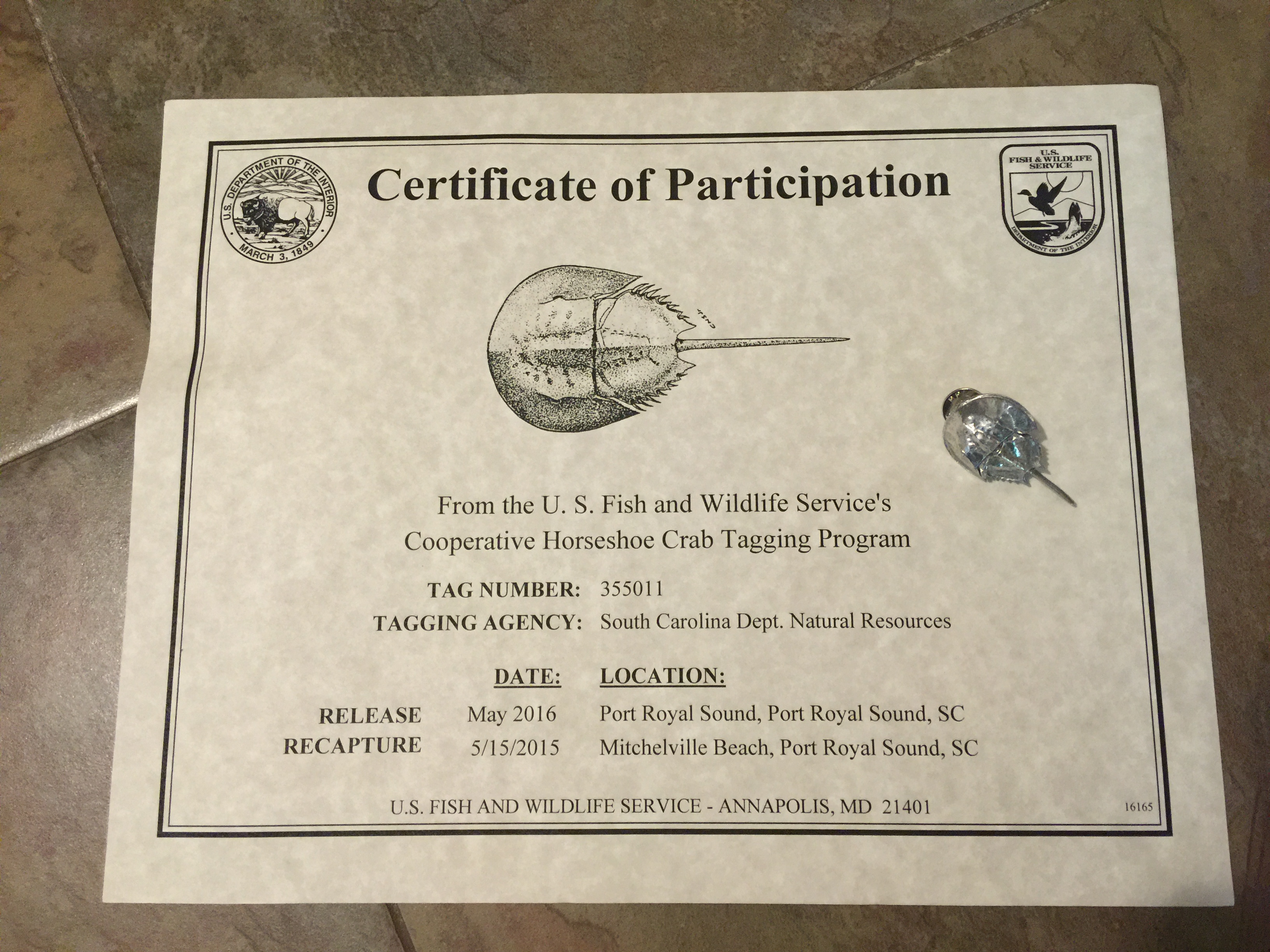
My certificate and pewter pin came about two months after I reported the tag. I think maybe the release and recapture dates got swapped, but they still tell me that this particular lady was tagged almost a year ago to the day on the same stretch of beach.
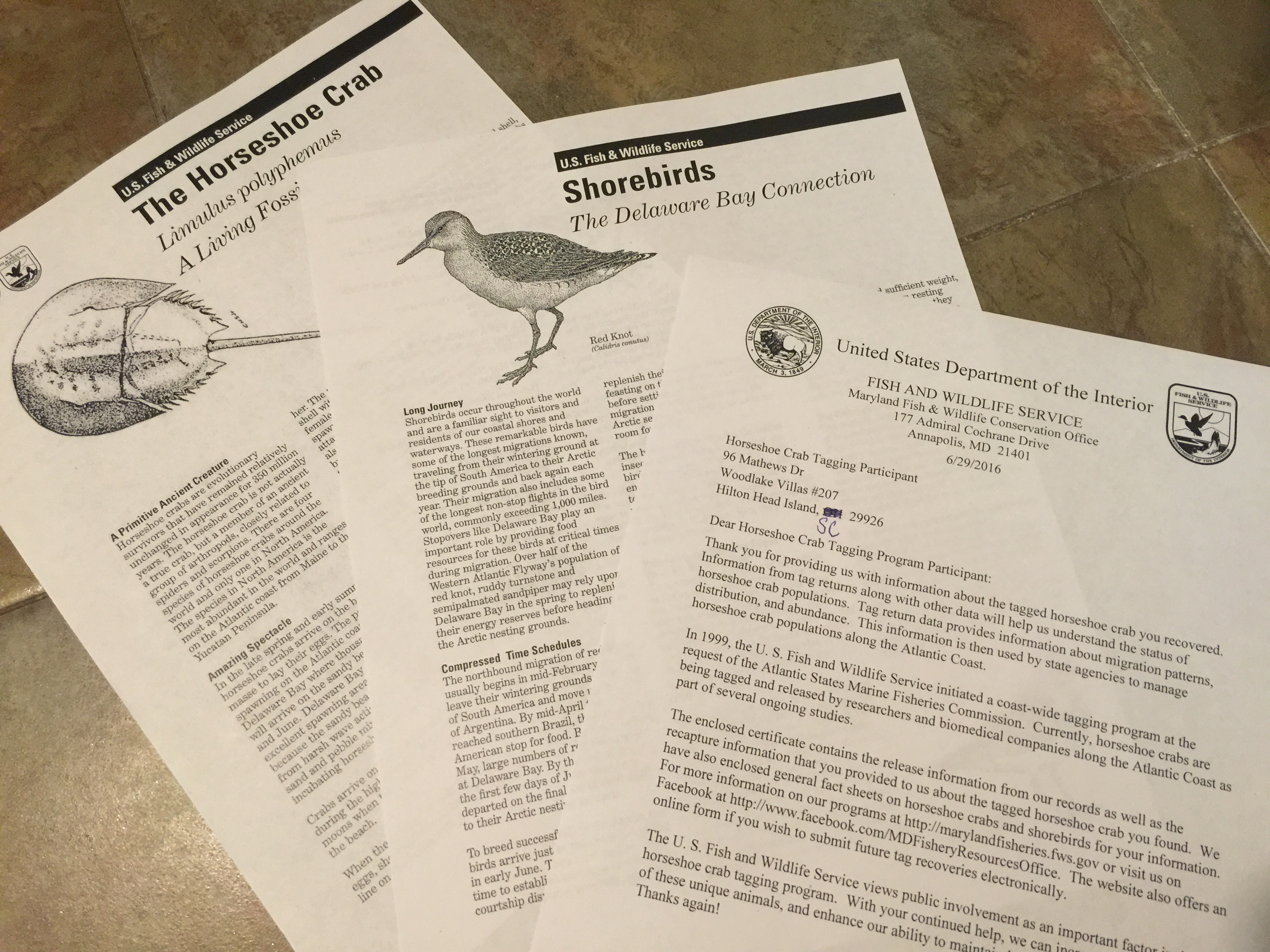
The information sent with my certificate and pin. I had to laugh that the original address was Hilton Head Island, OHIO.


